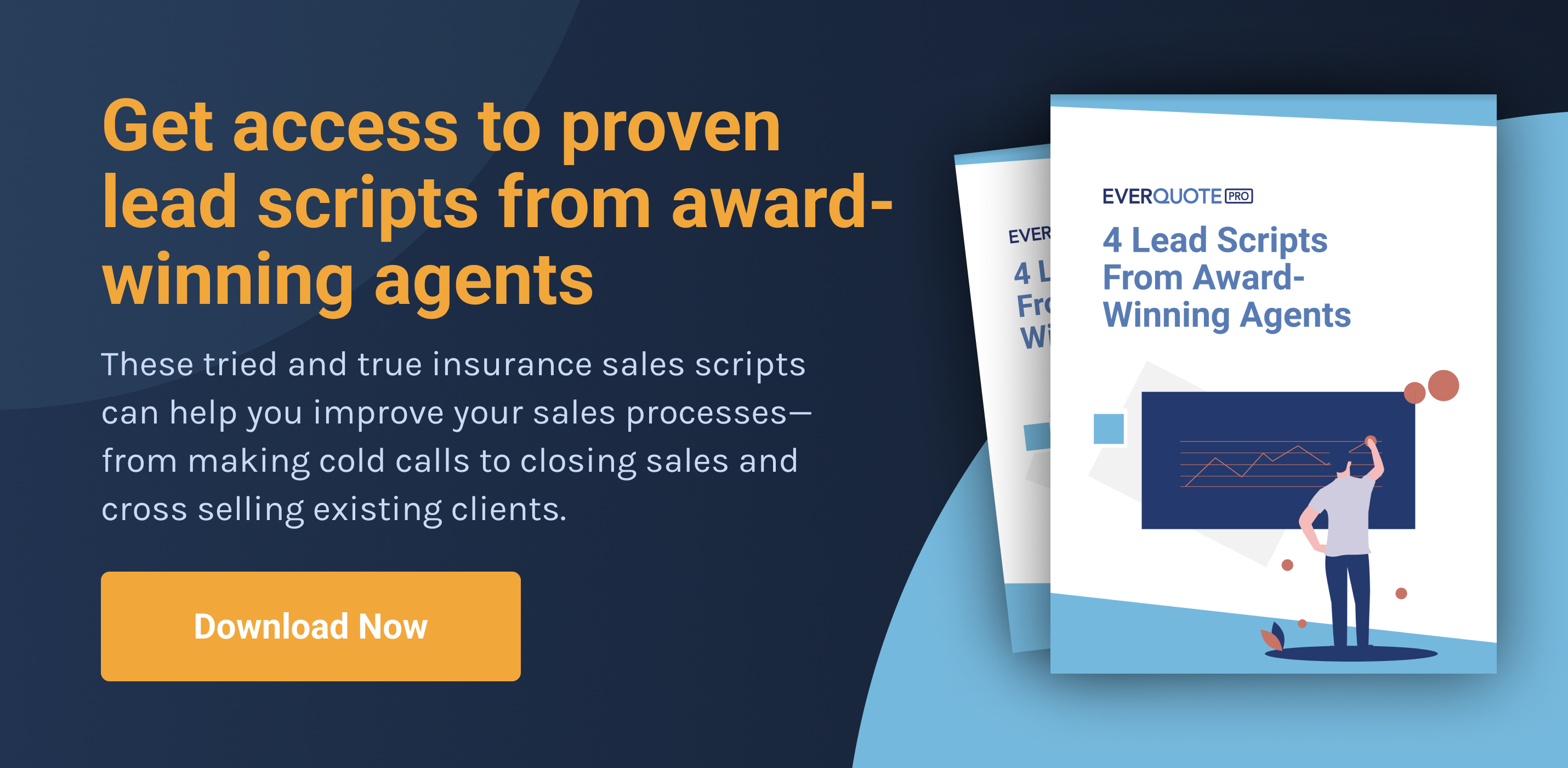
The Leads vs. Calls Debate
Insurance agents who use internet leads often fall into two categories: those who love traditional data leads and those who love live transfer calls. Agents on the data lead side of the “debate” typically like controlling the outreach process and follow-up, welcome the lower cost of the leads, and appreciate the ability to build up a large pool of leads that their producers can go back to prospecting when they have downtime. Agents on the calls side of the debate appreciate the efficiency of spending their time having conversations with interested prospects, not conducting potential weeks of follow-up to engage with a lead, and the high conversion rates that are typically seen with live transfers.
But what if neither side is “right” when it comes to the leads vs. calls debate? In fact, a hybrid approach – using both data leads and calls can yield amazing results for agents who deploy the optimal mix for their office. Before we proceed, let’s take a moment to define exactly what we mean when we say “leads” vs. “calls” and the pro’s and con’s associated with each.
The “Pro’s & Con’s” of Data Leads
When agents talk about “internet leads” moat of the time they are referring to what is called a “data lead.” They are called “data” leads because the agent receives a number of data points on the consumer delivered to them through their lead management system or email. Data leads are generated in a plethora of ways, but they typically begin with a consumer filling out an online form and submitting their information, which is then sent to an agent via a 3rd party (typically a lead vendor or aggregator). Depending on the vendor, the prospect may or may not have expressed interest in purchasing insurance. In fact, some vendors even incentivize consumers to submit their info with raffles and product giveaways, so the overall intent of data leads can vary widely by vendor. Agents receive the lead’s data and then reach out to the prospect via phone, email, and/or text to try and engage them in an insurance sales conversation, ideally ending with a bound policy.
Data leads are the “fuel” used by thousands of successful agents to power their insurance agencies and have helped countless agents grow multi-million dollar books of business. They are relatively inexpensive and are a very reliable way to power an agency’s growth.
The biggest downside with data leads is that they can require extensive amounts of prospecting and outreach just to have a conversation with an insurance shopper. That prospecting time can equate to hundreds of labor hours that producers could be spending on revenue generating activities like closing business, upselling, and cross-selling. And even once you get the lead on the phone there is still a distinct possibility you’ll get a “no” or that another agent will have already sold them on a policy before you got to them. This not only costs the agent time and money, but can also impact team member morale if producers are spending significant amounts of time making outbound prospecting calls.
The “Pro’s & Con’s” of Insurance Calls
Many insurance calls essentially start out as data leads, when a consumer shopping for insurance online fills out a form and submits their information. But instead of the consumer’s information being sent to an insurance agent, with calls a third party (usually a call center representative) calls the consumer and then – once they get them on the phone – transfers the call to a waiting insurance agent’s phone. There are also “inbound calls” where a consumer calls into a lead vendor to request an insurance quote and is then transferred to a waiting agent over the phone. Calls eliminate the number one downside to data leads – there is no time consuming outreach required to engage the lead in a conversation. And the conversion rate with calls is significantly higher than with data leads (for example, EverQuote calls convert at ~8X the rate of data leads). But there is a cost associated with this convenience, as calls are notably more expensive than data leads.
The Ideal “Hybrid” Approach – Mixing Insurance Calls and Data Leads
For agents taking mostly (or all) data leads, it can be difficult to keep up with all the follow-up required. Producers can end up getting so busy that they struggle to follow-up with every lead in a timely manner, which can impact overall conversion rates. By balancing out your data leads with calls, you can even decrease your data lead intake. Adding calls to the mix can help boost staff morale by providing some easy wins, while freeing up time to allow team members to increase the amount of follow-up touches they can execute with the data leads. These additional follow-up touches tend to lead to additional sales and an overall higher close rate on your leads.
Blending leads and calls can also help play to the strengths of different team members. Some team members may be really great with follow-up (and hence are ideal for working data leads), while others might be really strong closers or really good at “one call” closes, so would do particularly well with calls. Having a mix can leverage both team member strengths and lead to the best possible outcomes.
Adding calls to the mix won’t eliminate follow-up – months of follow-up on leads should still happen. Leads that go nowhere in the first weeks (or months) can also be great opportunities further down the road. But mixing calls and leads can be a surefire way to improve your team’s overall efficiency. As producers’ bandwidth increases, more follow-up activities per lead become possible. Ultimately the goal is to find yourself working a smaller number of data leads, but with more touches, mixed in with calls that, while more expensive upfront, end up leading to an overall lower cost-per-bind for your agency.
Download our free Live Transfer Leads Playbook to get more proven strategies for handling these types of leads, along with:
- Example “knockout” questions to quickly qualify or disqualify leads
- Live transfer script samples
- Advice on choosing the right live transfer leads for your agency
Use our Live Transfer Leads Playbook and help set your agency up for success with live transfer calls! Just click the link below to get it!















